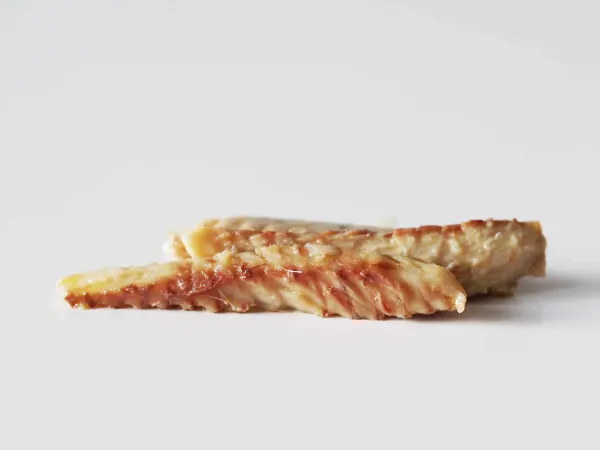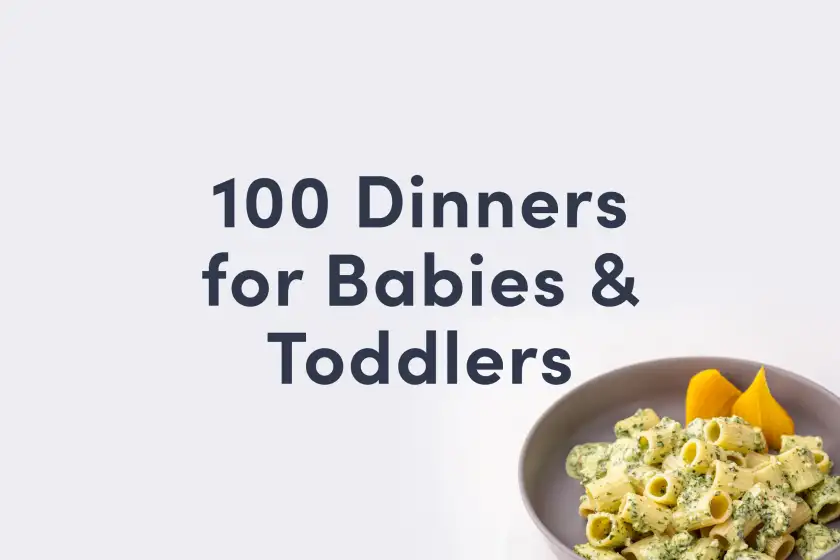Mackerel (North Atlantic)
Fish (Finned)
Age Suggestion
6 months
Iron-Rich
Yes
Common Allergen
Yes

When can babies have mackerel?
North Atlantic mackerel may be introduced as soon as baby is ready to start solids, which is generally around 6 months old. North Atlantic mackerel tends to be low in mercury and can be offered around once a week. King mackerel and Spanish mackerel, on the other hand, tend to be very high in mercury and should be avoided for babies.
North Atlantic mackerel (also called Atlantic chub, Atlantic mackerel, Boston mackerel, Norwegian mackerel, Scottish mackerel, and tinker) swim in large shoals throughout the Atlantic Ocean and the Mediterranean Sea. Rich in oils like omega-3 fatty acids, mackerel are often smoked or pickled, or cooked fresh and paired with bright, acidic ingredients like berries, lemons, and oranges.
Videos
Is mackerel healthy for babies?
Yes. North Atlantic mackerel tends to be low in mercury, and nutritionally, the fish is rich in protein and omega-3 fatty acids, including docosahexaenoic acid, or DHA, which helps to support baby’s cardiovascular health, cell growth, and eyesight. Mackerel also contains iron, selenium, and B vitamins to support red blood cells, thyroid health, and overall metabolism. Note that other species of mackerel (King mackerel and Spanish mackerel) tend to be very high in mercury and should be avoided for babies.
Is mackerel a common allergen?
Yes. Finned fish are classified as a Global Priority Allergen by the World Health Organization. It’s estimated that only 0.2% of people are allergic to finned fish worldwide, and the prevalence of fish allergies in children, while variable, is even less than in adults. About 40% of people with finned fish allergies don’t experience their first allergic reaction until adulthood. Unfortunately, most individuals who are allergic to finned fish do not outgrow the allergy.
Some individuals with finned fish allergy may react from inhaling proteins that become aerosolized when cooking fish. If this is the case for baby, you may wish to avoid cooking fish in the household when baby is present.
Around 50% of individuals with one finned fish allergy will react to another fish as well. This is because the major allergen in finned fish, beta-parvalbumin, is present in most fish, regardless of species. Due to the risks of cross-contamination or mislabeling of fish, allergists often recommend that those allergic to one species of finned fish avoid all finned fish until meeting with an allergist to determine which fish might be safely introduced into the diet. This is an individualized recommendation, so be sure to confirm with your allergist before offering other finned fish if baby is allergic to mackerel.
Finned fish are a known trigger of food protein-induced enterocolitis syndrome, also known as FPIES. FPIES is a delayed allergy to food protein which causes the sudden onset of repetitive vomiting and diarrhea to begin a few hours after ingestion. Left untreated, the reaction can result in significant dehydration. Unlike other food allergens, FPIES to finned fish may not present until later in life, and tends to be life-long.
Lastly, a note on scombroid poisoning, which is sometimes mistaken for a fish allergy. Scombroid poisoning is a type of food poisoning that occurs when someone eats fish that has been improperly refrigerated. This allows a large amount of histamine to build up in the fish. When consumed, this large load of histamine can cause symptoms that mimic those of an allergic reaction, causing some people to believe that they have developed a finned fish allergy, even if they are not allergic. Ensuring that fish has been stored at adequately cool temperatures can minimize the risk of such a reaction.
If you suspect baby may be allergic to fish, consult an allergist before introducing mackerel. As with all common allergens, introduce mackerel in small amounts at first and watch closely as baby eats to see if any adverse reaction occurs. If all goes well, gradually increase the serving size over time. Once common food allergens are successfully introduced, it is recommended to keep them in the diet regularly (twice weekly, if possible). However, this doesn’t mean that each different fish species must be offered multiple times a week. Finned fish share the same major proteins, so it is perfectly acceptable to rotate finned fish varieties according to availability and preference.
Is mackerel a choking hazard for babies?
No. Mackerel presents a low risk of choking when safely prepared for a child’s age and developmental ability, though in theory an individual could choke on any food. To reduce choking risk, remove all the bones from freshly cooked mackerel before serving. As always, make sure you create a safe eating environment and stay within an arm’s reach of the child during meals. For more information on choking, visit our section on gagging and choking and familiarize yourself with the list of common choking hazards.
Learn the signs of choking and gagging and more about choking first aid in our free guides, Infant Rescue and Toddler Rescue.
Is mackerel high in mercury?
North Atlantic mackerel is typically low in mercury, although other species of mackerel (including Spanish mackerel and King mackerel) commonly contain high amounts. Mercury is a persistent and progressive toxin to which babies are particularly susceptible.
Thankfully there are lots of fish low in mercury that babies can enjoy. Fish offers nutrients that are particularly important for babies (such as omega-3 fatty acids and iodine) that can be hard to find in other foods. To minimize exposure to mercury from fish, focus on those fish that are lowest in mercury and limit the amount and frequency of fish that have higher amounts of mercury. More on this topic in our guide, Best & Worst Fish for Babies.
How do you serve mackerel to babies?
Every baby develops on their own timeline, and the suggestions on how to cut or prepare particular foods are generalizations for a broad audience.
6 months old +:
Offer strips of canned North Atlantic mackerel for baby to munch on. Don’t worry about the bones–the canning process makes the bones in canned fish soft and edible. Alternatively, try breaking freshly cooked and deboned or canned mackerel into flakes and mixing the flakes with mashed avocado, mayonnaise, olive oil, or yogurt. From there, offer the mash on a pre-loaded spoon or spread it on strips of toast. If you have fresh North Atlantic mackerel, serve pieces of the well-cooked fish (skin and bones removed) cut into strips about the width and length of two adult pinky fingers pressed together. It’s also fine to offer baby a bite of fully-cooked smoked North Atlantic mackerel, if desired.
9 months old +:
Offer bite-sized pieces of canned or freshly cooked, deboned North Atlantic mackerel, skin removed, for baby to pick up with their developing pincer grasp (where the thumb and forefinger meet). Alternatively, serve cooked, deboned or canned mackerel in larger strips (about the width and length of two adult pinky fingers pressed together) for biting and tearing practice.
12 months old +:
Serve canned or cooked, deboned North Atlantic mackerel in longer strips, bite-sized pieces, cakes and patties, or flaked on its own or mixed into other foods. This is a great age to work on utensil practice with foods like mackerel. At this age, you can also serve smoked mackerel regularly, if desired.
For more information on how to cut food for babies, visit our page on Food Sizes & Shapes.
Written by
Expert Tips Delivered to Your Inbox
Sign up for weekly tips, recipes and more!
The content offered on SolidStarts.com is for informational purposes only. Solidstarts is not engaged in rendering professional advice, whether medical or otherwise, to individual users or their children or families. No content on this site, regardless of date, should ever be used as a substitute for direct medical advice from your doctor or your medical or health professional, nutritionist, or expert in pediatric feeding and eating. By accessing the content on SolidStarts.com, you acknowledge and agree that you are accepting the responsibility for your child’s health and well-being. In return for providing you with an array of content “baby-led weaning” information, you waive any claims that you or your child may have as a result of utilizing the content on SolidStarts.com.









